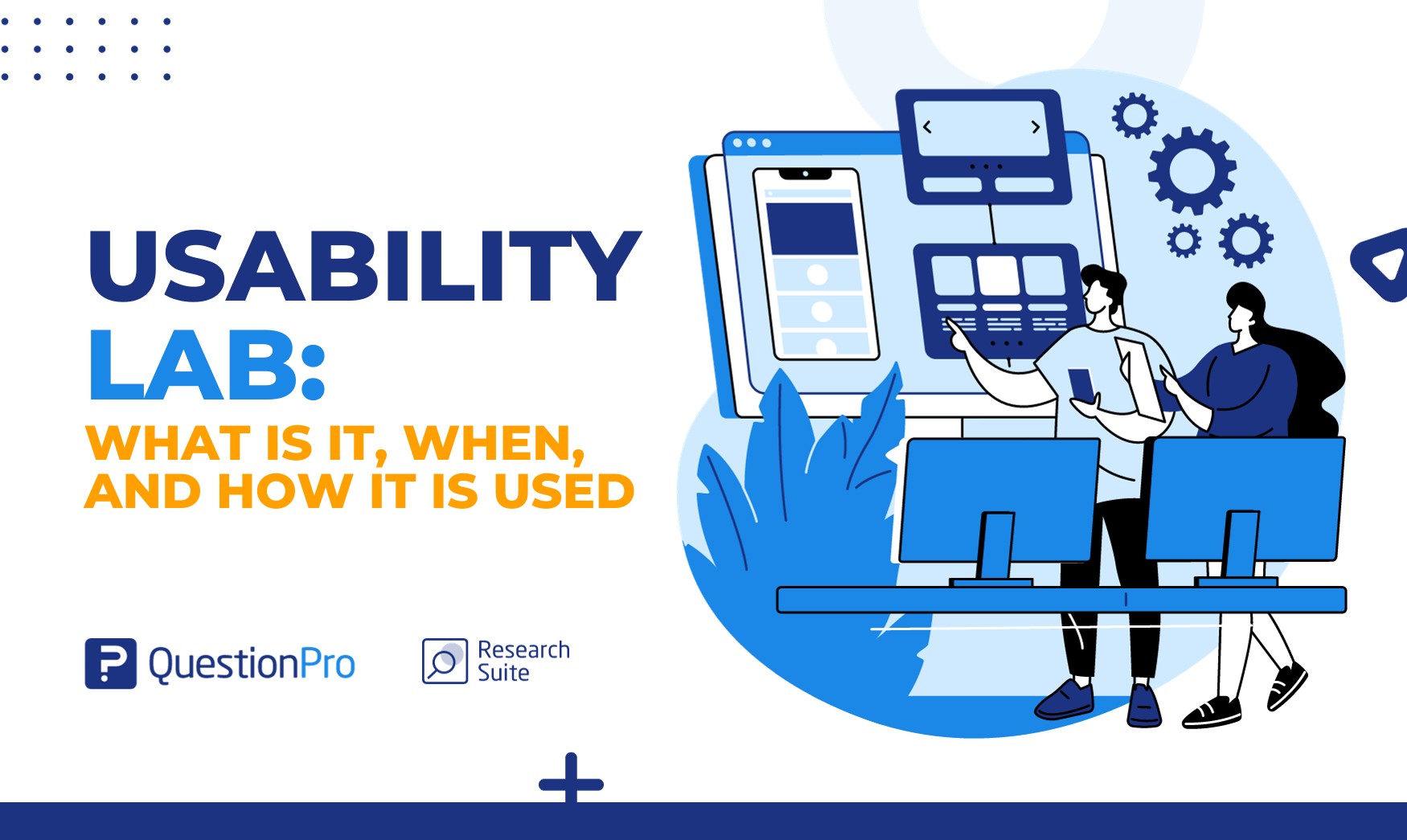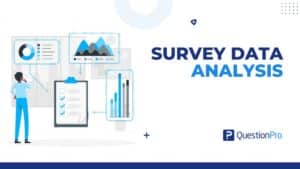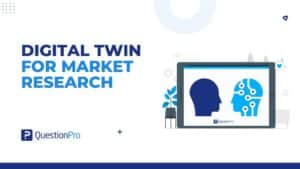
Usability is a critical factor in the success of any product, be it a website, a mobile app, or a physical device. Understanding how users interact with your product and make improvements based on their feedback is essential. This is where a Usability Lab comes into play.
In this blog, we’ll explore what a Usability Lab is, when to consider using one, and how to set it up.
What is a Usability Lab?
A Usability Lab is a specialized and controlled environment designed for a specific purpose: to observe and evaluate how users interact with a product. This product can be software, a website, a mobile app, or any other item intended for user interaction.
The key goal of a Usability Lab is to provide a space where designers, researchers, and developers can closely watch and study how real users perform various tasks with the product. To effectively study and understand user interactions, Usability Labs are equipped with various tools and technologies. These tools can include:
- Screen Recording: Usability Labs often have setups to record everything happening on a user’s screen. This includes what they click, where they move the mouse, and what they type. Screen recordings provide a detailed visual record of a user’s actions.
- Eye-Tracking Devices: Some Usability Labs use eye-tracking technology. This technology records where a user is looking on the screen. It’s valuable for understanding what parts of a user interface attract the most attention.
- Microphones: Recording audio allows researchers to capture user comments, questions, or expressions of frustration or satisfaction during the testing process. These verbal cues can provide insights into the user experience.
In the context of project management, Usability Labs play a critical role in developing software, websites, and apps. It adheres to user-centric design principles and ensures that the final product provides a superior user experience. Here’s how it works:
- Validation of User-Centric Design: Usability Labs confirm that the product is being developed with the user in mind. It’s not just about making a product that works; it’s about making it intuitive, efficient, and enjoyable for users.
- Identifying User Pain Points: By observing users in action, developers can identify any challenges or difficulties that users encounter. This helps in pinpointing and addressing issues before the product is released.
- Continuous Improvement: The insights gathered from Usability Labs can lead to iterative improvements. Designers and developers can fine-tune the product based on real user feedback, making it more user-friendly and effective.
In a nutshell, a Usability Lab is a vital tool in ensuring that a product is designed and developed with the user’s needs, preferences, and behaviors in mind. It’s a structured way to gather data, observe users, and ultimately create a product that delivers an exceptional UX.
When to Use a Usability Lab?
As we learned, the usability lab is a powerful tool for assessing the user-friendliness and effectiveness of a product or interface, and it can be used in various stages of the product development and improvement process. Here are some critical scenarios when to use a usability lab:
Product Development
It is often used to assess early prototypes and concepts during product development. By testing a product with real users, designers and developers can identify usability issues before they become costly problems.
Redesign or Updates
Even after product launch, usability labs are valuable for assessing updates or redesigns. They can help identify areas that need improvement and ensure that changes positively impact the user experience.
Competitive Analysis
It can also be used to compare your product to competitors. By understanding where your product excels and falls short in comparison, you can make strategic decisions to stay ahead in the market.
User Testing
When adding a new feature or functionality, performing usability testing in a usability lab is a good practice. This can help ensure the new addition aligns with user expectations and behavior.
User Training and Onboarding
It can also be used to test the effectiveness of user training and onboarding materials. This ensures that new users can quickly learn how to use the product.
How to Set Up a Usability Lab
Setting up a usability lab requires careful planning and consideration of the equipment, space, and resources you’ll need. Below, I’ll outline the steps to set up a usability lab:
1. Define Your Objectives:
Begin by clearly defining the goals and objectives of your usability lab. What are you trying to achieve? Are you testing a specific product, conducting general usability research, or benchmarking your product against competitors?
2. Choose a Location:
Select a suitable space for your usability lab. It should be quiet, free from distractions, and comfortable for test participants and observers. Choose a room with one-way mirrors or video streaming capabilities to facilitate observation.
3. Acquire the Necessary Equipment:
Here is a list of essential equipment you’ll need for a basic usability lab setup:
- Computers or devices for participants to interact with.
- Cameras to capture the participant’s face, hands, and screen.
- Microphones to record participant comments.
- Eye-tracking equipment, if necessary.
- Screen recording software.
- Usability testing software for creating tasks and collecting data.
- Comfortable seating for participants.
- Observation room with a one-way mirror or video streaming capabilities.
- Note-taking materials for observers.
4. Prepare the Lab Environment:
- Arrange the space to simulate the typical usage test environment for your product. Ensure proper lighting, comfortable seating, and a clean, clutter-free workspace.
- Set up cameras and microphones to capture the participant’s interactions. Position them so that they capture the participant’s face, hands, and screen simultaneously.
- Test all equipment to ensure that it’s functioning correctly.
5. Develop User Scenarios and Tasks:
Create realistic user research projects, scenarios, and tasks for participants during the usability tests. These tasks should mirror actual user interactions with your product.
6. Recruit Participants:
Identify and recruit participants who represent your target audience. The number of participants will depend on your UX research goals, but testing with at least five users is a standard guideline.
7. Conduct Pilot Testing:
Before conducting formal usability tests, conduct a pilot test with a small group of users to ensure that the lab setup, equipment, and tasks are working as intended.
8. Conduct Usability Tests:
Once everything is prepared, conduct usability tests with your recruited participants. A moderator should guide the participants through the tasks and collect data.
9. Record and Analyze Data:
- Record and capture data from the usability tests, including video, audio, screen recordings, and participant feedback.
- Analyze the data to identify usability problems, pain points, and areas for improvement.
10. Report and Recommendations:
Generate a detailed report summarizing the findings from the usability tests. Include recommendations for improvements based on the data collected.
11. Iterative Testing:
Usability testing is often an iterative process. After making improvements based on the initial findings, conduct additional tests to verify that the changes have had the desired effect.
12. Maintain and Update the Lab:
Regularly maintain and update the lab equipment and software to remain effective and current.
Which Method Can Be Used in Usability Lab?
The choice between moderated and unmoderated usability testing methods depends on several factors, including the specific goals of the usability test, the resources available, and the target audience‘s characteristics. Both methods have their advantages and are used in different situations.
Moderated Usability Testing:
- A facilitator or moderator guides the participants through the usability test in moderated testing.
- This method is often used when a more in-depth understanding of user behavior and thought processes is needed. The moderator can ask questions, probe for insights, and assist when participants encounter issues.
- Moderated testing is particularly useful for complex or novel interfaces and when you want to gather qualitative data.
- It’s commonly used in usability labs where the moderator and participant are in the same physical location.
Unmoderated Usability Testing:
- Unmoderated testing involves users conducting usability tests independently without direct facilitation.
- This method is often used for remote or large-scale testing, where having a moderator for each participant may need to be more practical.
- Unmoderated testing can provide a large quantity of data quickly and at a lower cost, making it useful for identifying common usability issues.
- It’s typically used with online usability testing tools and platforms where participants can interact with the product remotely.
The choice between these methods often depends on the specific needs of a usability study. Moderated testing is used more in usability labs when researchers require deeper insights and are willing to invest more time and resources into the testing process.
On the other hand, unmoderated testing is often used for larger-scale, remote, or cost-effective usability studies, focusing on quickly identifying common issues and trends. Both methods have their place in usability research, and the choice should be based on your study objectives and constraints.
Benefits of Usability Labs
Usability labs offer several key benefits in the product development process:
- User-Centered Design: Usability labs ensure that a product’s design and functionality align with the needs and expectations of the end-users.
- Early Issue Identification: Problems can be identified and addressed early in development, reducing the cost of fixing issues post-launch.
- Data-Driven Decisions: Conducting usability testing provides concrete data and insights, which can guide design decisions and lead to a more successful product.
- Competitive Advantage: By regularly assessing usability by usability specialists, you can stay ahead of the competition by continuously improving your product.
- Enhanced User Satisfaction: A user-friendly product is likelier to satisfy its target users, leading to higher customer retention and positive word-of-mouth.
Conclusion
Usability Labs are invaluable for understanding how users interact with your products and websites. By utilizing it, you can identify and address usability issues, resulting in a better user experience and increased customer satisfaction.
Whether you’re in the early stages of development, planning updates, or want to compare your product to the competition, a Usability Lab can provide the critical insights you need to succeed in the digital world.
QuestionPro offers robust features for usability labs, including task analysis, heatmaps, and real-time participant feedback, enhancing user experience research.
The “Start Your Free Trial” button text succinctly encourages users to explore these valuable capabilities, making it an ideal choice for UX professionals seeking powerful research tools.







